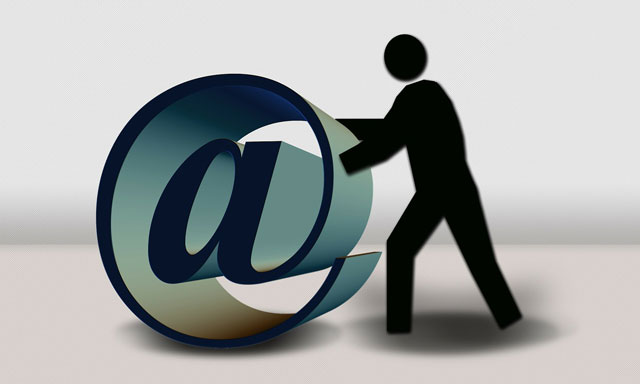 Sent that e-mail you shouldn’t have? Good news! Gmail has introduced an “unsend” feature. For a 30-second window after sending that bad idea to the wrong person, you can “unfire” the gun. Somehow I don’t see this reducing the number of unfortunate drunk e-mails sent unintentionally to harass beautiful people — you only realise that mistake once you sobered up. Instead this may help with spelling mistakes and bad turns of phrase that creep into professional e-mails…
Sent that e-mail you shouldn’t have? Good news! Gmail has introduced an “unsend” feature. For a 30-second window after sending that bad idea to the wrong person, you can “unfire” the gun. Somehow I don’t see this reducing the number of unfortunate drunk e-mails sent unintentionally to harass beautiful people — you only realise that mistake once you sobered up. Instead this may help with spelling mistakes and bad turns of phrase that creep into professional e-mails…
Actually, I’m not entirely sure what the point of an unsend button would be. If anything, it sounds like a crutch for the stupid. If you are in the habit of shooting your e-mails from the hip, then you deserve whatever comes back. We’ve all sent bad e-mails. I certainly have — and still do. But you just need to roll with it. If an “unsend” feature sounds like a good idea, you may have to revisit your e-mail habits.
Google’s contribution is just the latest in ways to try and reign in electronic mail. In the past, its Labs division released the inspired “drunk e-mail” plugin, Google Goggles, which forced you to solve a maths puzzle before your e-mail could be sent — the perfect buffer to 2am remorse-filled typing. Well, maybe not so perfect — it has since disappeared. Perhaps maths problems were encumbering even the sober.
The big trend at the moment is to not let your e-mail get away from you, which is impossible. Still, we try. Google has that new app that supposedly does something to help the cream rise to the top. I’ve not used it, mainly because I am justifiably paranoid the software will skip an important e-mail. Outlook has some similar features, mainly splitting mail between what is sent to you or just sent to a group. I turn that off. Give me my e-mail raw.
A few years ago, Inbox Zero was the fad fix — and it is quite sensible, yet only ideal for some personality types. I tried it for a while, but the only habit that persisted was to occasionally dump all my e-mails in a DMZ folder and starting again.
Other innovations include filters for auto-archiving and raising the importance of an e-mail so it stands out. Those work great, but all I achieved is space for new e-mails. Right now my poor account is groaning with hundreds of folders on topics I set up years ago, patiently feeding every relevant message into them as it arrives. On occasion I attempt to clean it up, but it devolves into the usual exercise of: “Is this useful or not?” Forget fear of missing out, or FOMO. We as a society suffer from FOTMBUODSLKI (fear of this may be useful one day so let’s keep it).
Hey, it’s not an all-bad habit. I collect computer cables, because you’d be surprised how often you need older USB cords.
Some optimists think we will soon see the end of e-mail overload, citing new chat clients and collaboration tools as evidence. Good luck. There are more than 2bn e-mail users and 4bn e-mail accounts in the world — numbers I think are a bit conservative. We send over 200bn e-mails a day. You can roll Facebook, Google, Wikipedia, Snapchat, YouTube and so on together to maybe eclipse that number. Our e-mail use is staggering and a few new apps won’t easily disrupt such a giant. It’s not even an app — it’s a frikkin’ protocol. That’s the next level.
If anything, this anti-e-mail sentiment is annoying. There are so many good sites I’d like to keep an eye on, yet they usually only offer Twitter or Facebook. Even RSS feeds are growing rarer. Whatever happened to daily digests and newsletters, fed to a system that is over 40 years old (the first e-mail was sent in 1971) and has a usability barrier so low it even makes an Apple product interface feel like a Rubik’s Cube? We may hate e-mail as we hate traffic, but try living without your @ address or your car.
Of course, e-mail has not exactly been endearing us. But we are winning some battles. Most of the e-mail sent every day is spam, something I have not encountered in years. Gmail and its peers have taken care of that. If you still get spam, you or your network admin are doing something wrong. Ten years ago, spam was massively annoying, but these days you hardly ever hear a joke about a penis enlargement e-mail. Even those 419 scams appear to land in a bin somewhere.

Another is backing up e-mail. These days if someone suggests I could solve a problem with my e-mail by using a desktop client, I suppress an urge to assault them. Desktop client? What is this, 2004? Listen, I have done my bit copying Outlook files to CDs and hoping I did it right so I can retrieve the e-mails with a new install and then subsequently either failing to restore them or accomplish the restore, then never to check those e-mails again.
Between the cloud and search, I never worry about my e-mail. If I can’t find a message, then I conclude it was deleted or my search phrase is off the mark. If someone else can’t find an e-mail, I assume they still use a desktop client.
So we’ve made some headway with e-mail. There’s no more spam or losing archives. But I think the other challenges are insurmountable. There will always be e-mail overload and there will always be things you can’t retract.
Instead, let’s focus on positive change. Here’s my contribution: if you tell me you never got that e-mail I sent to you, I know you are lying. You are not fooling anyone. Either I’d get a report of its failure or it landed in your spam folder. But chances are you did get it, you’re just ignoring it. E-mails don’t just get lost between senders anymore. And if they do, fire your administrator.
So let’s learn to love e-mail again and stop worrying so much about what it should be doing. And, please, read before you send. Life doesn’t have an undo button. Why should e-mail?
- James Francis is a freelance writer whose work has appeared in several local and international publications
- Read previous columns by Francis

